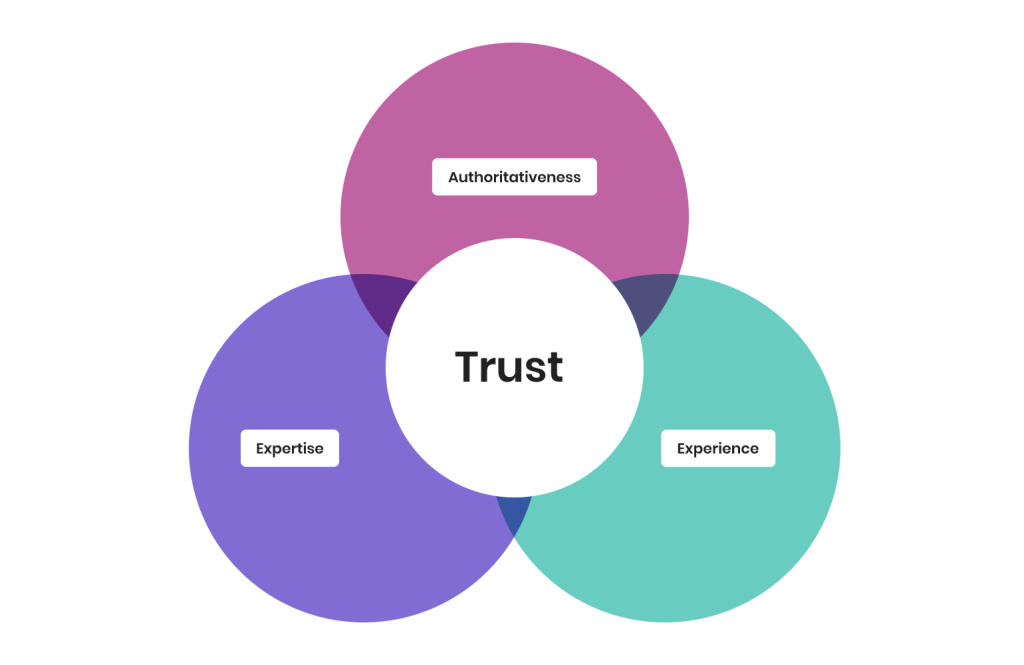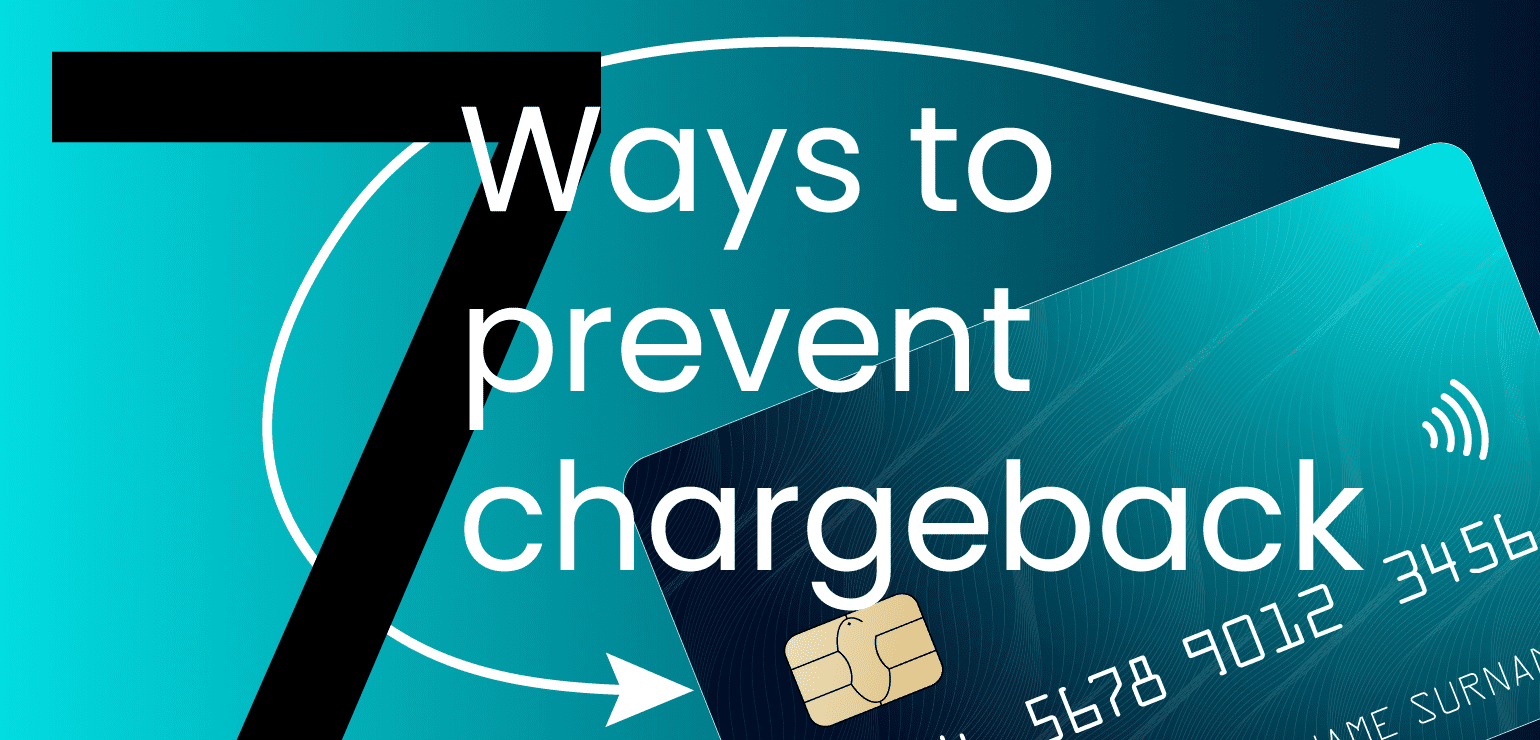How to increase trust in your eCommerce store with E-E-A-T

Have you ever been on an eCommerce site you just don’t trust?
Perhaps there wasn’t enough information about the products, you didn’t recognise the payment platform, or you just had a gut feeling that something wasn’t right.
One in five people have left a site because they didn’t trust it with their credit card information.
When you manage an eCommerce store, it’s essential to give not just shoppers, but search engines, a reason to trust you. That’s where E-E-A-T comes in.
Not heard of E-E-A-T before? We’ve put together this guide to explain what it is, how it works, and how to use it to your advantage.
Article topics
- What is E-E-A-T?
- Why is E-E-A-T so important?
- Is E-E-A-T relevant to all websites?
- How to find out your E-E-A-T rating?
- How to demonstrate E-E-A-T on your pages
- Conclusion
What is E-E-A-T?
E-E-A-T is a vital part of Google’s search quality guidelines, and can affect where a page ranks in the search engine results.
E-E-A-T stands for:
- Expertise. The amount of knowledge you have in your specific area of interest
- Experience. The amount of first-hand experience you have in your specific area of interest
- Authoritativeness. Whether third parties consider you an expert in your specific area of interest
- Trust. The most critical component of E-E-A-T, whether you can be considered a trustworthy and credible source of information by web visitors
E-A-T (expertise, authoritativeness, trust) was introduced in 2014. Google added the additional ‘e’ (experience) in 2022.

Why is E-E-A-T so important?
Search engines like Google want to provide users with the right information for their needs.
They don’t want to offer misleading, spammy, irrelevant content. In the best-case scenario, this can be frustrating; in the worst-case scenario, it can be dangerous.
The E-E-A-T framework ensures that websites that provide high-quality content rank as high as possible.
Is E-E-A-T relevant to all websites?
Yes. However, it’s more important to some websites than others.
Google advises that some webpages could ‘potentially impact the future happiness, health, financial stability, or safety of users.’ It calls these pages ‘Your Money or Your Life’, or YMYL, pages.
YMYL pages are held to a higher standard when it comes to quality and trustworthiness, as Google doesn’t want to risk showing potentially unsafe content to users. For example, a healthcare website that gives the wrong information about the treatment of a specific condition.
Ecommerce stores are generally considered YMYL pages. This is because these sites encourage people to spend money and handle sensitive financial information.
Google doesn’t want to prioritise stores that sell low-quality products that aren’t sold as described or promote untrustworthy websites that may mishandle people’s credit card details.
Your eCommerce store could be under even more scrutiny if you sell products that could impact people’s health, well-being, or financial stability. For example:
- Healthcare and wellness products like vitamins, dietary supplements, and CBD products
- Cosmetics and beauty products, like makeup, sunscreen, and moisturiser
- Medical devices and equipment, like fitness trackers, glucose monitors, and home medical testing kits
- Safety equipment and protective gear, like bicycle helmets, car booster seats, and personal protective equipment
- Children’s products, like accessories, toys, and clothing
- Financial and investment products, like bonds, stock, and cryptocurrency

How to find out your E-E-A-T rating?
Unfortunately, Google doesn’t share your E-E-A-T rating with you, but Google’s search quality guidelines do provide some examples of what low and high levels of E-E-A-T may look like.
If your webpage (or website) is ranking low in the search engines, and you’ve ruled out any technical issues, it might be that a low E-E-A-T is to blame.
Likewise, Google can’t tell you if your page is considered a YMYL topic, so you must use your best judgement.
How to demonstrate E-E-A-T on your pages
Now that you know what E-E-A-T is, how do you put it into practice?
We’ve put together some helpful hints and tips for applying E-E-A-T to your eCommerce store. Follow this guidance, and you’re one step closer to providing your customers with high-quality, trustworthy, credible content.
1. Use AI-generated content sparingly
Google has advised that the quality of content counts rather than whether it was written by AI or real people.
However, AI-generated content has two main disadvantages when it comes to E-E-A-T. Firstly, it can be inaccurate, which can mean you run the risk of providing misleading content to your web visitors. Secondly, it doesn’t demonstrate actual experiences. For example, you can ask an AI chatbot like Chat GPT or Bard to write a product review, but this review won’t give any useful first-hand experience.
If you use AI content, thoroughly fact-check it and weave in your own personal experiences for better results.
2. Show off your experience and/or expertise
All the content on the Xigen blog is written by digital marketing experts with several years of expertise in the industry, as well as practical experience in how digital marketing concepts work.
If you create articles for your eCommerce site, don’t be afraid to tell customers about your authors’ experience and expertise.
Take a look at the Healthline website, for example. Each author has a byline detailing who they are and their qualifications.
Proving quotes and comments from knowledgeable people can also be helpful when it comes to E-E-A-T. For example, if you sell food online, you can interview a nutritionist or a chef for a blog post.
Expertise is essential, but so is experience. Let’s say you run a travel agency and want to write a blog called ‘Top 10 tourist attractions in London’. You’ll rank higher if someone who lives in London creates the content, rather than someone who has never been there before.
3. Create an ‘about us’ page
A fantastic way to show off your expertise in your industry and your staff’s qualifications is to create an ‘about us’ page.
As well as being great for E-E-A-T, an about us page can help customers put a face to the name, and reinforce your brand identity.
An awards page can also have a similar effect and be a strong trust signal for your business. We’ll look at trust signals in a bit more detail later.
4. Make sure your site is secure
A hacked, defaced, or spammy web page automatically ranks low on the E-E-A-T framework.
You can reduce the risk of this happening by protecting your site from cyber criminals and security threats.
5. Use credible sources and fact-check your information
Let’s return to the Healthline website we discussed earlier in the article. To establish high E-E-A-T, this website does two things.
Firstly, all articles link to high-quality sources, typically information from medical journals and studies. This shows that the information has been thoroughly researched, is completely accurate, and is up to date.
Secondly, all articles are copy-edited, fact-checked and reviewed by an expert in the field. These reviewers are mentioned at the end of the article, as well as when the post was last revised.
While you probably won’t have to go into as much detail on your eCommerce website, you must ensure you provide visitors with the correct information.
6. Get high-quality backlinks
The ‘A’ in E-E-A-T stands for ‘authoritativeness’. This means that other websites hold your website or web page in high regard, to the point that they link back to you. The more high-quality backlinks you have, the more likely you’ll appear on the first page of Google.
It’s important to focus on quality rather than quantity when getting backlinks. Poor-quality and spammy backlinks can have a counterproductive effect, meaning you can fall down the rankings, and even see your site completely removed from search engine results.
Here are some of our top tips for getting backlinks:
- Create high-quality content. The better your content, the more likely other sites will link to you
- Consider guest posting. This is when you post content on a high-quality website in exchange for a backlink
- Don’t pay for links, as this can harm your search engine ranking
- Be patient. It can take time to get good-quality backlinks
7. Prevent low-quality ads
It’s okay to have advertisements on your website as long as they’re not distracting or intrusive.
Full-screen pop-ups and interstitial ads (full-screen ads often placed on mobile apps) don’t just annoy your visitors, but can affect your E-E-A-T score. This is because they can make your site appear spammy and low-quality.
It’s no surprise that nearly three-quarters of people hate pop-up ads!
Test any ads you use on your website to ensure they provide value and, most importantly, don’t frustrate customers. If your conversion rate and search engine ranking are low, it might be time for a rethink.
8. Use a reliable payment platform
Customers will abandon their shopping cart if they don’t trust your website with their card details, which can lead to your site taking a hammering in the search engine results.
Choosing a dependable payment gateway can give customers peace of mind and means you don’t lose out on sales or SEO.
9. Provide a great user experience
User experience, or UX, concerns your customer’s overall experience on your website. A solid user experience doesn’t just mean shoppers have a better time on your website, but can build trust and demonstrate your expertise.
The scary news? Only half of businesses carry out UX testing on their websites.
Here are some easy ways to improve your UX and boost your search engine rankings.
- Make sure your website looks good and loads quickly on mobile
- Check your page load speed and optimise any slow-loading elements
- Ensure your site is accessible; for example, you use relevant alt text on photos
- Use clear, concise, jargon-free language
- Test your navigation to make sure it’s easy to find everything
10. Enable reviews
Reviews from happy customers don’t just lead to more sales; they can help your search engine rankings too.
As reviews come from customers that have bought and have first-hand experience with your products, they’re an essential part of the E-E-A-T framework.
Even critical feedback can be valuable as you’re showing your trustworthiness by presenting a balanced set of reviews.
Encourage customers to provide reviews, and take the time to respond to any comments you receive.
11. Work on your trust signals
A trust signal is a piece of information that tells customers that your website is reliable and authoritative. There are a wide range of different trust signals out there, everything from reviews and testimonials to accreditations and awards.
It’s essential to use the right trust signals in the right place on your website. A/B testing can help you see which trust signals your customers like the most.
12. Keep your site up to date
Earlier in this article, we mentioned that E-E-A-T was previously known as E-A-T until it was updated in 2022. When researching this blog, we noticed that most of the content that referred to the framework as E-A-T were much lower in the rankings than those that referred to it as E-E-A-T.
This is not a coincidence. The search engines will prioritise the web pages that provide the most relevant and up-to-date information, to ensure users don’t read misleading content.
Regularly updating your pages and removing out-of-date content will boost your website’s rankings and build trust with customers.
Take the time to audit and review the information you provide to customers on a regular basis. If you have a lot of pages, a product information management system (PIM) can make the process easier.
In conclusion: be genuine with your customers
It’s not enough to provide shoppers with the products they want at the right price. You need to give them a reason to trust you. By following the E-E-A-T framework, you increase the chances of being seen in the search engines and convincing customers to buy your wares.
E-E-A-T can be a lot to take in, especially if it’s an entirely new concept to your business. If we had to give you one final tip, it’s this: be authentic.
When you’re authentic and honest about the products you sell, you immediately become more trustworthy in the eyes of your potential customers. This allows you to show off your expertise, experience, and authoritativeness, making people more likely to trust what you do.
If you need a little extra help refining your user experience, we’re here to help. Get in touch today to speak to one of our experts.


 Back
Back
